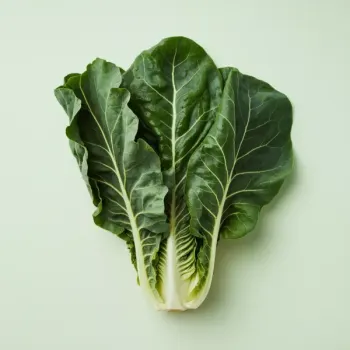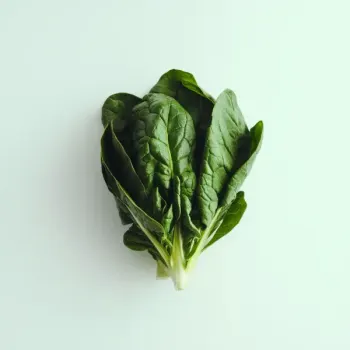Collard greens are a sturdy, slightly bitter leafy vegetable often slow-cooked in Southern dishes, while spinach is tender, mild, and versatile, ideal for quick sautés and salads.

Collard greens are a hardy leafy green vegetable common in Southern U.S. cuisine. They have a slightly bitter taste and are typically cooked slowly with meats or vegetable broths.

Spinach is a versatile leafy green with tender leaves and a mild, slightly sweet flavor. It can be eaten raw or cooked and is popular worldwide in a variety of dishes.
Collard greens have a robust, bitter flavor and thick leaves that hold up well to long cooking times, making them ideal for braising and stews. Spinach, with its delicate texture, wilts quickly and is perfect for quick sautés, fresh salads, and as a nutritious addition to smoothies.

Your ultimate Recipe Box, Meal Planner, and Cooking Class all in one
In Southern cuisine, collard greens are often slow-cooked with ham hocks or bacon, creating a savory, hearty dish. The leaves become tender and absorb the smoky flavors of the meat. Spinach is less common in traditional Southern dishes but can be used in lighter, fresher preparations like salads with a warm bacon vinaigrette.
Collard greens can be used in smoothies for a nutrient boost. Their bold taste is best balanced with sweet fruits like bananas or mangoes. Spinach is a popular smoothie green due to its mild flavor which blends seamlessly with other ingredients, delivering a smooth texture without overpowering the taste.
For a quick sauté, collard greens can be chopped finely and cooked with garlic and olive oil. They add a hearty element to the dish, suitable for robust meals. Spinach wilts rapidly when sautéed, making it perfect for a light and fast side dish. It pairs well with garlic, lemon, and a touch of nutmeg.
Both collard greens and spinach are nutrient-dense and rich in vitamins A, C, and K, as well as fiber.
| Nutrient | Spinach ( per Cup (raw) ) | Collard Greens ( per Cup (raw) ) |
|---|---|---|
| Fat | 0.1g | 0.2g |
| Iron | 0.8mg | 0.2mg |
| Calcium | 30mg | 52mg |
| Protein | 0.9g | 0.9g |
| Calories | 7 | 11 |
| Carbohydrates | 1.1g | 2g |
While typically cooked due to their tougher texture, tender young collard greens can be used raw in salads, similar to spinach.
Spinach cooks much faster than collard greens, so add it at the end of the cooking process to avoid overcooking and nutrient loss.
Both are highly nutritious; the choice depends on your nutritional needs and taste preference. Collard greens are higher in calcium, while spinach provides more iron and folate.
Yes, both can be frozen, although blanching them first can help preserve color, flavor, and nutritional value.
Cooking collard greens with a pinch of baking soda or pairing them with sweet or acidic ingredients can help neutralize their bitterness.